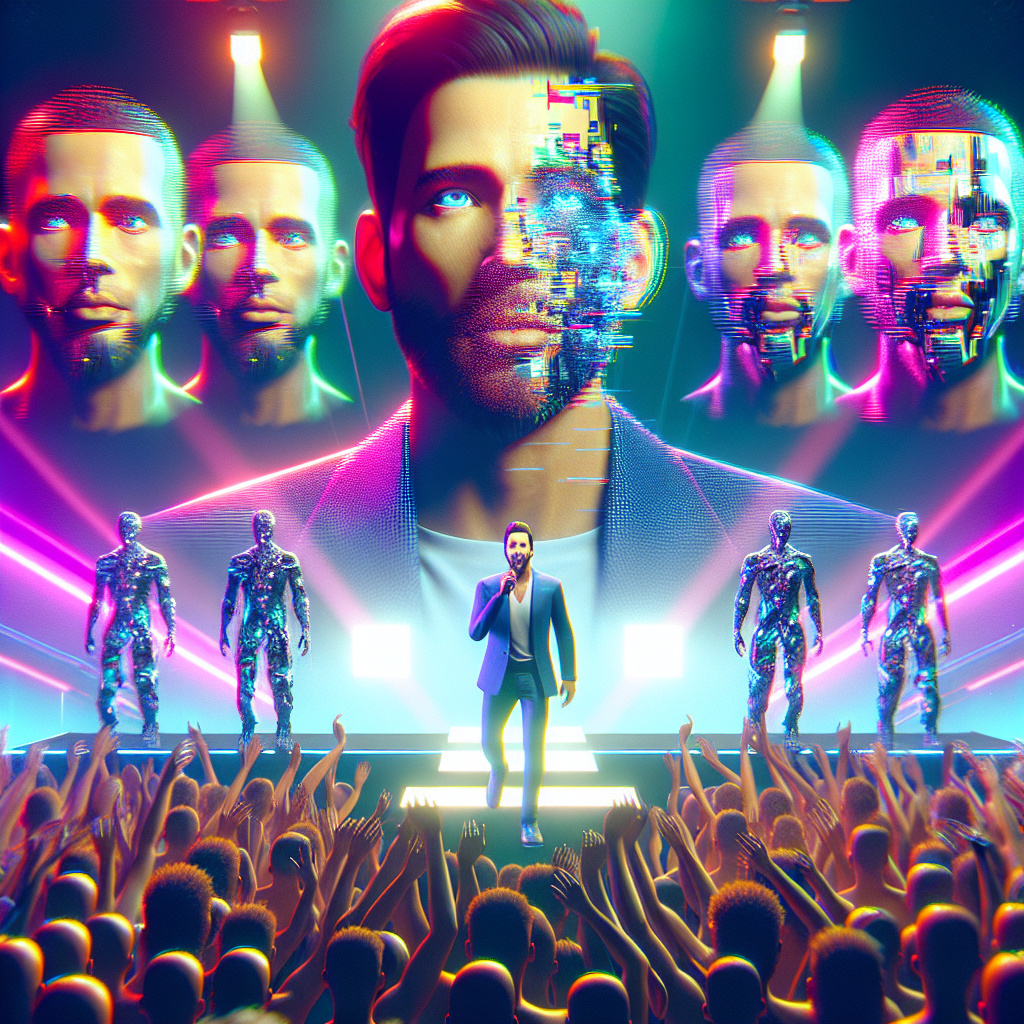Will Smith recently shared a video across his social media accounts that appeared to showcase immense waves of enthusiastic supporters cheering for him during a leg of his latest European tour. On the surface, the clip resembled the kind of celebratory fan montage one might expect from a beloved global performer. In his caption accompanying the footage, Smith expressed heartfelt gratitude, noting that the most rewarding element of touring is not the scale of the venues or the grandeur of the production, but rather the intimate experience of connecting with fans in person. He concluded with a gesture of reciprocity, acknowledging not only that he sees them, but that their recognition and support of him is equally meaningful.
Stretching across the screen, the audiences depicted in the video are shown in densely packed numbers, with a variety of devoted fans holding up signs that proudly declare how Smith’s artistry has had a significant impact on their lives. One particular placard stands out, attributing the listener’s ability to endure the harrowing challenge of battling cancer, at least in part, to Smith’s music. On the surface, such testimony reinforces the deep bond between performer and audience as well as the life-affirming influence art can have in moments of personal struggle. Yet, despite these seemingly authentic depictions, the overall visualization of the crowd conveys an unusual, even unsettling quality. When examined more carefully, the imagery begins to reveal irregular details: distorted human faces that appear digitally corrupted, hand gestures and finger alignments that defy anatomical plausibility, and subtle but unmistakable alterations in facial structures that suggest the presence of artificial manipulation.
This uncanny aspect of the footage quickly sparked a flurry of speculation among online observers. Many viewers began to suspect that the entire crowd sequence had not been captured authentically at Smith’s concerts, but rather fabricated with the assistance of generative artificial intelligence technologies. The accusations struck a particularly precarious chord for Smith, considering that his public image is still attempting to recover from the controversy surrounding the infamous onstage altercation widely referred to as “the slap.” Within this highly scrutinized climate, any suggestion that he or his team might be inflating his popularity through the artificial manufacture of adoring fans—or worse, fabricating stories of fans whose lives were uplifted by his music in order to embellish his legacy—appears almost indefensible.
However, the situation is not entirely straightforward. Evidence suggests that these supporters depicted in the questioned video are not purely fabricated. Tech blogger Andy Baio highlighted that Smith’s touring pages contain older posts, both photos and videos, in which many of the same audiences and their distinctive signs are clearly visible. Those earlier uploads did not exhibit any of the visual inconsistencies typical of AI generation, and nothing in them indicates that they were manipulated. This introduces the possibility that the new video is not wholly artificial, but a confusing hybrid: authentic live footage collaged or interwoven with AI-generated enhancements meant to render the visuals more striking. By using genuine images of real crowds as source material and then digitally embellishing or reanimating them, Smith’s content team may have inadvertently pushed the footage into a realm that feels manufactured, making it extremely difficult for audiences to decipher where authenticity ends and digital alteration begins.
Unfortunately, the pace of online discourse rarely allows for careful forensic analysis. Most social media users are unlikely to sift through Will Smith’s entire archive to corroborate whether the cancer-related testimonial, for example, actually originates from a legitimate fan. Instead, they seize upon the immediate impression: Smith posted a video in which his fanbase looks disturbingly artificial. Consequently, the knee-jerk conclusion circulating widely has been that he intentionally misled his followers with fabricated content. This perception, regardless of the underlying truth, emerges as socially embarrassing—deeply cringe-worthy—and risks solidifying in the collective consciousness.
The timing exacerbated the problem. Around the same period, YouTube had initiated an experimental feature intended to improve video playback on its Shorts platform by applying machine-learning tools to reduce blurring, suppress visual noise, and heighten clarity. While technically designed to refine image quality, this automated enhancement process appears to have inadvertently made Smith’s video look even more uncanny and artificial when viewed on YouTube compared to the same content posted elsewhere. Recognizing the backlash, YouTube’s creator liaison, Rene Ritchie, announced that the platform would soon allow creators to disable the enhancement tool, as it has proven unpopular with both audiences and video makers.
At this point, one could mount a measured defense of Smith. One might argue that the integration of AI-generated elements is not categorically deceptive but functions as an advanced form of post-production editing aimed at cinematic presentation, comparable in principle to conventional editing techniques, filters, or stylizations that artists have long employed to intensify their visual identity. Yet the public’s reaction exposes a cultural reality: while audiences are generally tolerant of tools like Photoshop used for color correction or autotune applied to refine pitch, they grow sharply resistant when generative AI crosses into territory that feels like misrepresentation. The difference lies in audience perception of truthfulness. Retouching a photograph with Photoshop may be viewed as an industry standard, but using artificial intelligence to conjure ersatz fans risks being perceived as fabricating entire realities.
This breach of trust operates on the same principle as discovering that a pop star’s polished vocals on recordings exist only thanks to heavy reliance on autotune: what initially felt like raw talent is revealed to be a technical façade, leaving audiences feeling cheated. Similarly, if a company markets a skincare product by photographing a model and then digitally erasing blemishes to sell the cream’s effectiveness, consumers recognize the manipulation as dishonest. Once disillusion sets in and an audience feels deceived, rebuilding that trust becomes extraordinarily challenging. For Will Smith, who has long been affectionately remembered as the charming “Fresh Prince of Bel-Air,” the risk is that missteps in digital presentation could further erode his cultural standing, underscoring just how fragile reputations have become in the age of AI-driven media.
Sourse: https://techcrunch.com/2025/08/28/ai-or-not-will-smiths-crowd-video-is-fresh-cringe-2/



